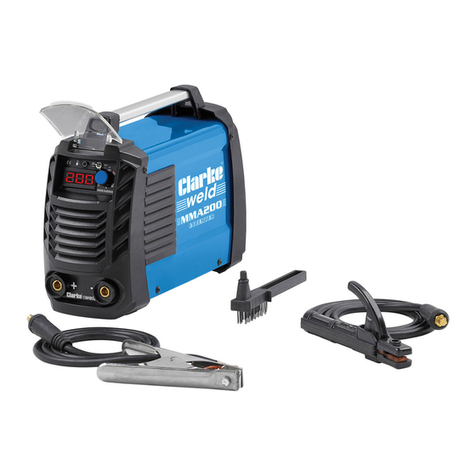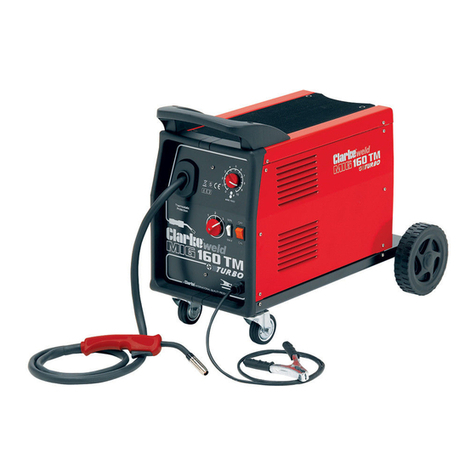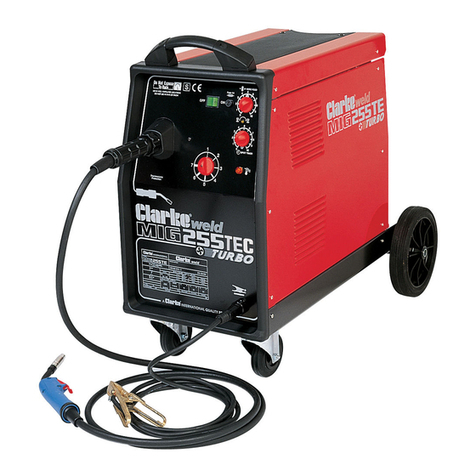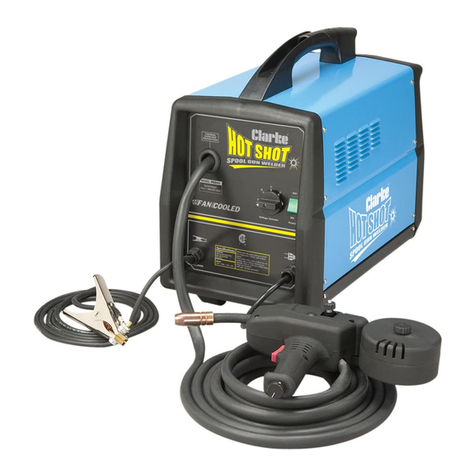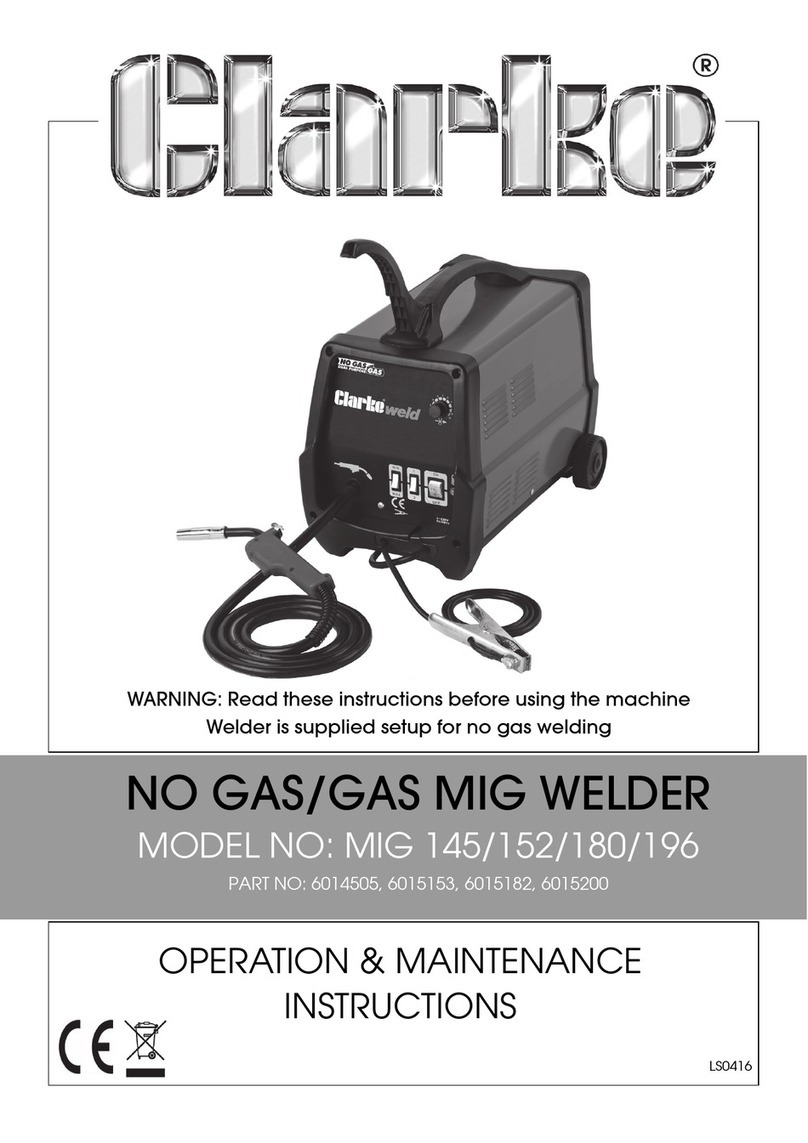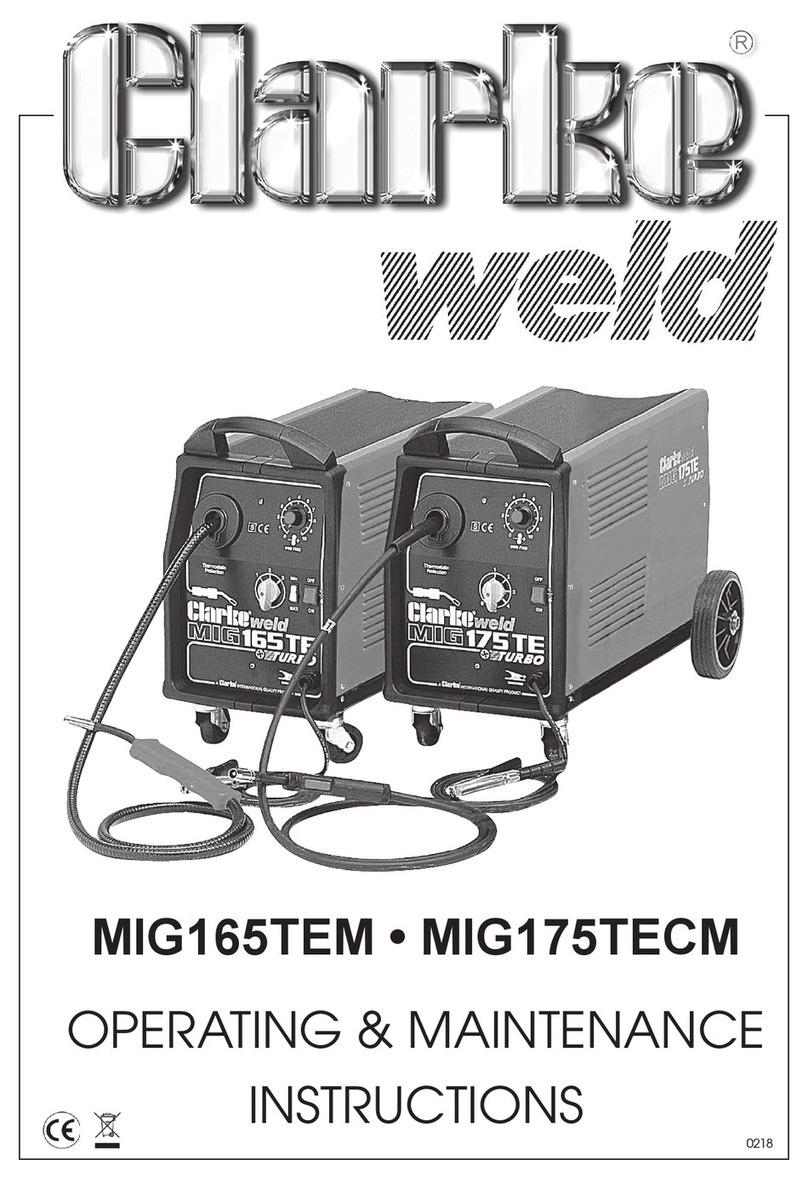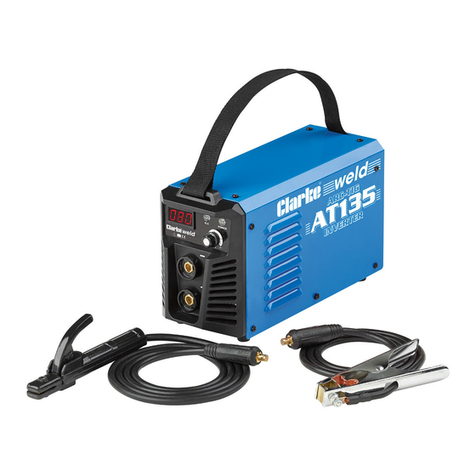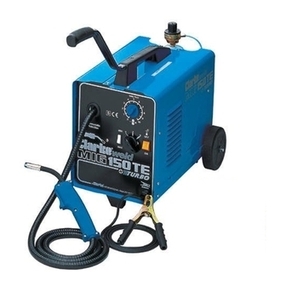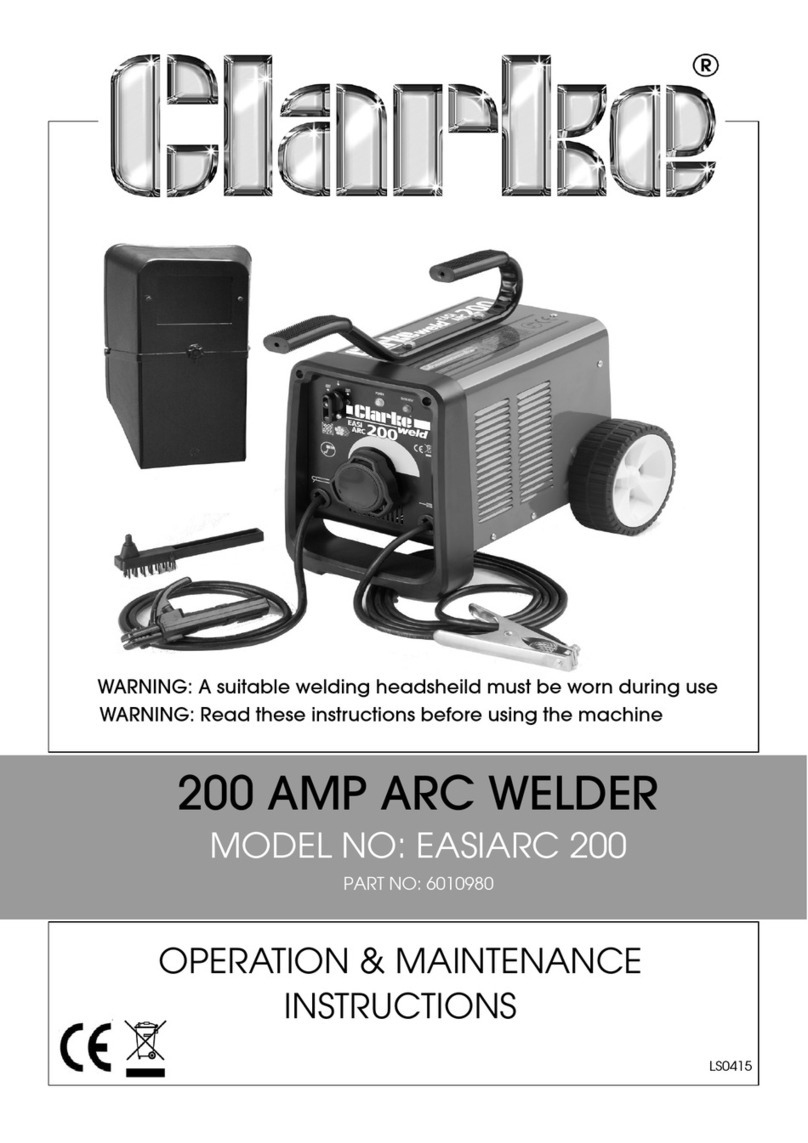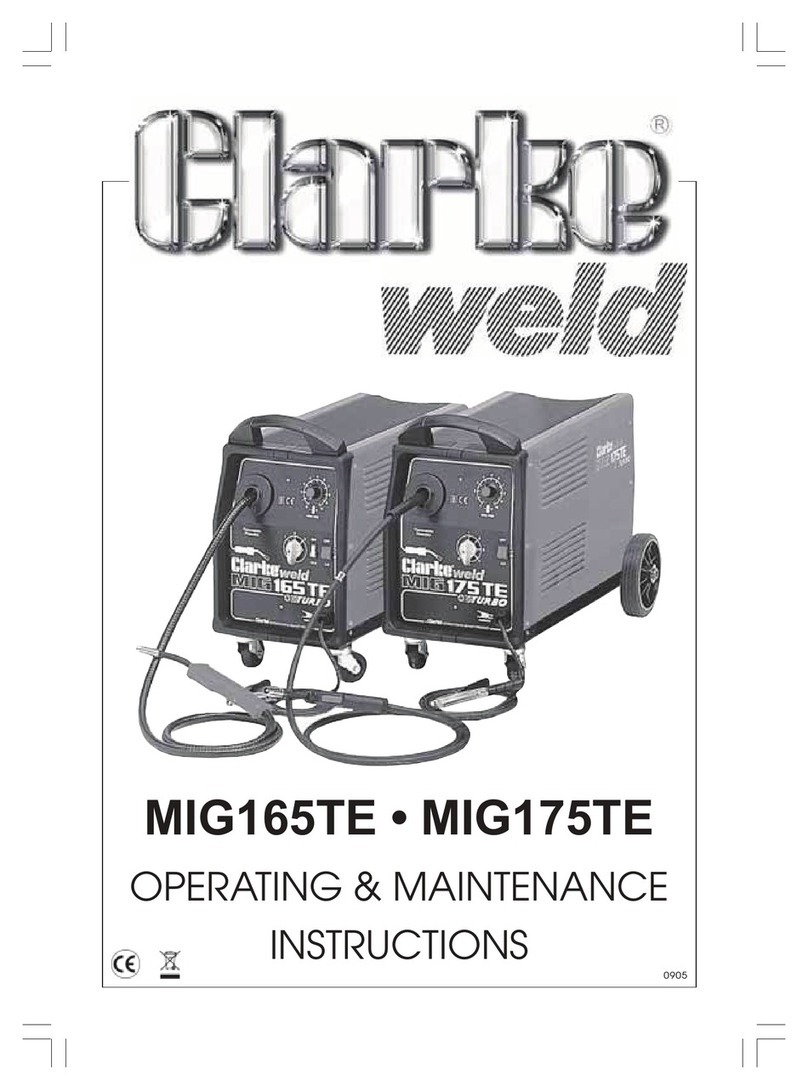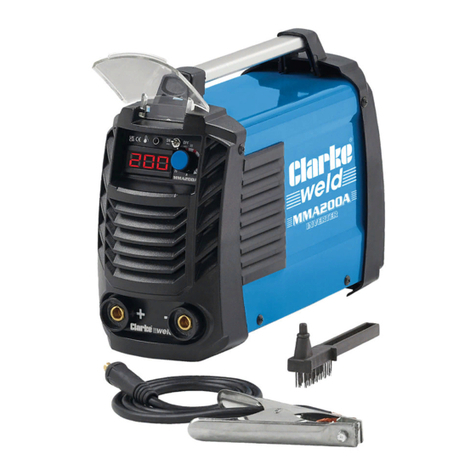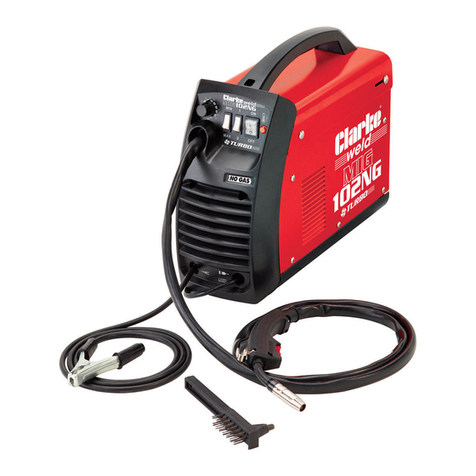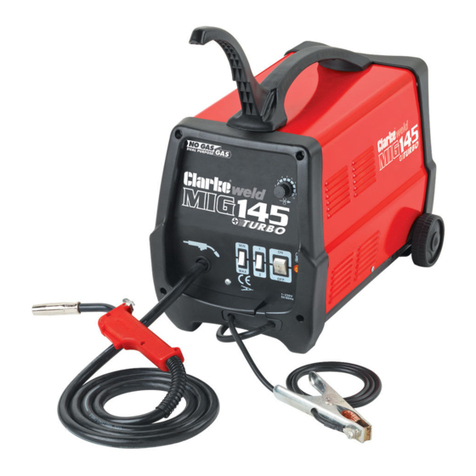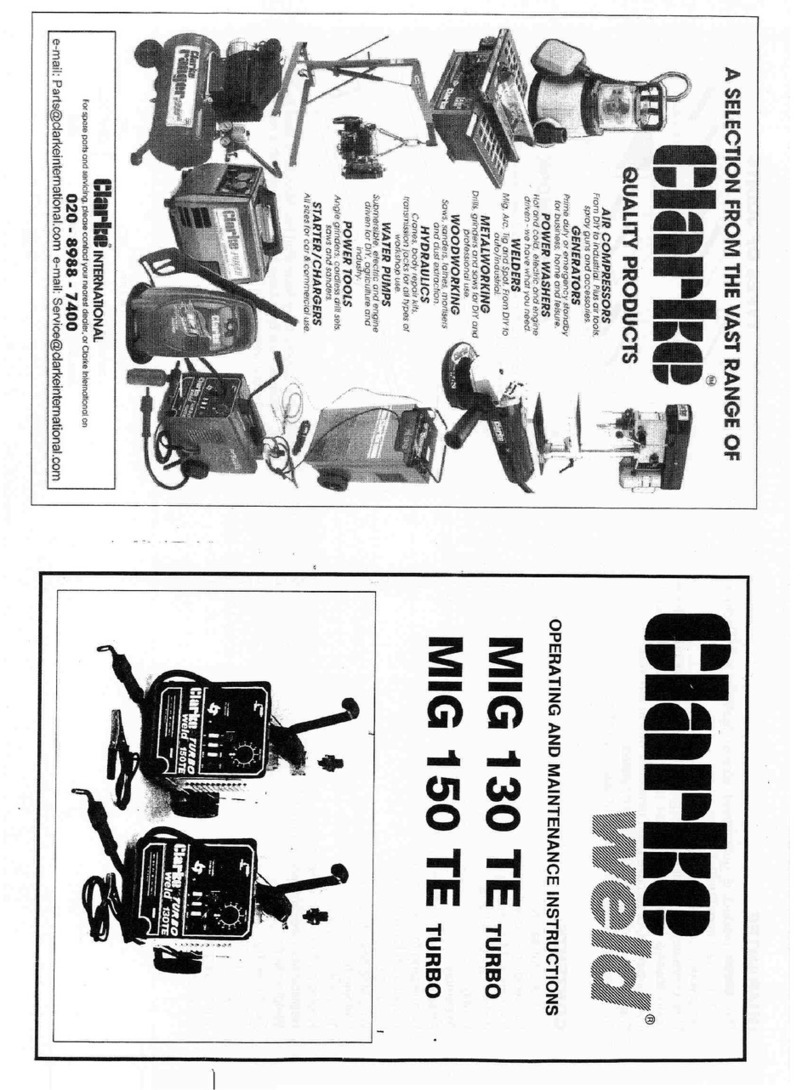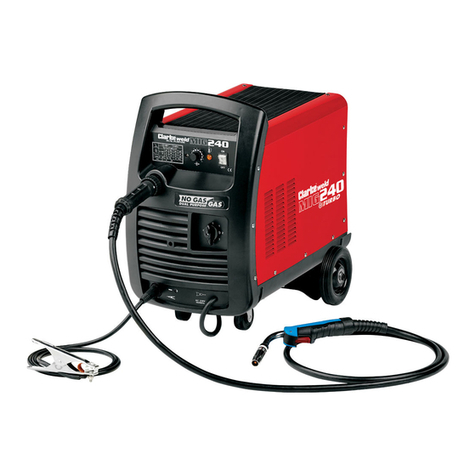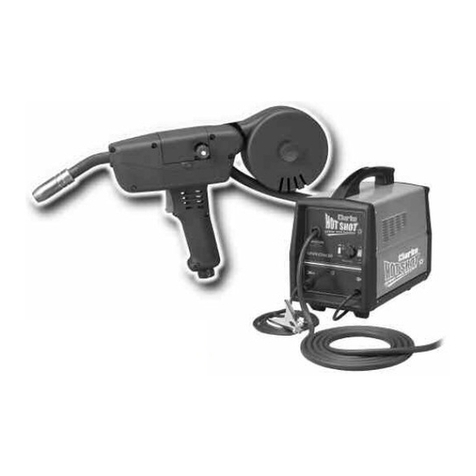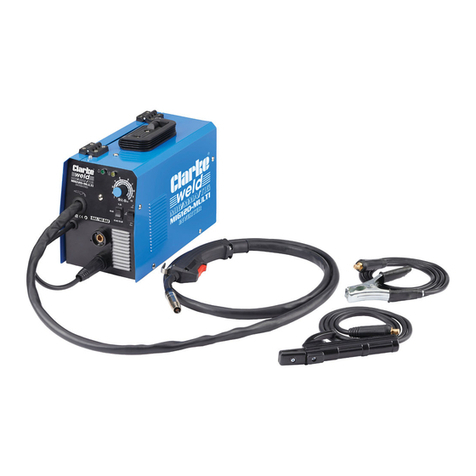10
2) Electrode holders
Fully insulated electrode holders should be used. Do NOT use holders with
protruding screws or with any form of damage.
3) Connectors
Fully insulated lock-type connectors should be used to join welding cable.
4) Cables
Frequently inspect cables for wear, cracks and damage. IMMEDIATELY
REPLACE those with excessively worn or damaged insulation to avoid
possibly lethal shock from bared cable. Cables with damaged areas may
be taped to give resistance equivalent to original cable. Keep cable dry,
free of oil and grease, and protected from hot metal and sparks.
5) Terminals and other exposed parts
Terminals and other exposed parts of electrical units should have insulating
covers secured before operation.
6) Electrode
a) Equipment with output on/off control (contactor)
Welding power sources for use with the gas metal arc welding, gas
tungsten arc welding and similar processes normally are equipped with
devices that permit on/off control of the welding power output. When
so equipped the electrode wire becomes electrically LIVE when the
power source switch is ON and welding gun switch is closed. Never
touch the electrode wire or any conducting object in contact with
the electrode circuit unless the welding power source is off.
b) Equipment without output on/off control (no contactor)
Welding power sources used with shielded metal arc welding and similar
processes may not be equipped with welding power output on/off
control devices. With such equipment the electrode is electrically LIVE
when the power switch is turned ON. Never touch the electrode unless
the welding power source is off.
7) Safety devices
Safety devices such as interlocks and circuit breakers should not be
disconnected or shunted out. Before installation, inspection, or service of
equipment, shut OFF all power and remove line fuses (or lock or red-tag
switches) to prevent accidental turning ON of power. Do not open power
circuit or change polarity while welding. If, in an emergency, it must be
disconnected, guard against shock burns, or flash from switch arcing.
Always shut OFF and disconnect all power to equipment. Power disconnect
switch must be available near the welding power source.
23
PROBLEM CAUSE REMEDY
1. No “life” from welder Check fuses and mains lead a) Replace fuses as necessary If
problem persists return welder to
your local dealer
b) Check fuse size
2. No wire feed Motormalfunction Return welder to your local dealer
3. Feed motor operates a) Insufficient Feed Roller Pressure a) Increase roller pressure
but wire will not feed b) Burr on end of wire b) Re-cut wire square with no burr
c) Liner blocked or damaged c) Clean with compressed air or
replace liner.
d) Inferior wire d) Use only good “clean” wire
e) Roller worn out e) Replace roller
4. Wire welds itself to tip a) Wire feed speed too low a) Unscrew tip, cut wire and fit new tip
Increase wire speed before
operating again
b) Wrong size tip b) Fit correct size tip
5. Wire feeds into ‘birds a) Wire welded to tip a) As above plus reduce feed roller
nest’ tangle pressure so that if blockage occurs
wire slips on roller i.e. no feed
b) Wire liner damaged preventing
smooth operation b) Renew wire liner
6. Loose coils of wire Drum brake too slack Tighten drum brake
tangle around wire Caution: Do not over-tighten
drum inside machine
7. Erratic wire feed a) Drum brake too tight a) Loosen drum brake slightly
b) Feed roller worn b) Check and replace if necessary
c) Insufficient pressure on feed roller c) Increase pressure on feed roller
Caution: Do not over-tighten
d) Wire dirty, rusty, damp or bent d) Re-cut wire and ensure it is clean
e) Liner partially blocked e) Clean with compressed air
8. Poor quality welds a) Insufficient gas at weld area a) Check that gas is not being blown
away by draughts and if so move
to more sheltered weld area. If not
increase gas supply
b) Rusty, painted, damp, oil or b) Ensure workpiece is clean and dry
greasy workpiece
c) Rusty/dirty wire c) Ensure wire is clean and dry
d) Poor earth contact d) Check earth clamp/workpiece conn
9. Welder cuts out Duty cycle exceeded Allow welder to cool before
whilst in use (auto cut-out operates) continuing(Untilamber light goesout)
Note: If duty cycle is continually
exceeded, damage to the welder
may result, and welder output is
probably too small for application
If you have any problems which cannot be resolved by reference to the above, or if you
require spare parts for your welder please contact your local Clarke dealer.
TROUBLESHOOTING
Your Clarke Mig Welder has been designed to give long and trouble free service. If,
however, having followed the instructions in this booklet carefully, you still encounter
problems, the following points should help identify and resolve them.
